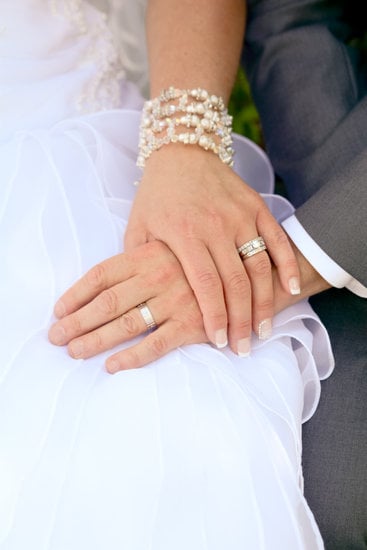Are you wondering, “how much are wedding dress alterations” and why they are necessary? When it comes to finding the perfect wedding dress, the fit is crucial. Understanding the importance of wedding dress alterations can make all the difference in achieving that flawless look on your special day. From ensuring a comfortable fit to enhancing the overall appearance of the gown, wedding dress alterations are a vital part of bridal attire preparation.
Factors such as fabric, embellishments, and design complexity can greatly influence the cost of wedding dress alterations. It’s essential to be aware of these factors and how they affect pricing when budgeting for your alterations. Additionally, knowing the average cost of wedding dress alterations in different regions can help you plan for this expense.
Finding affordable wedding dress alteration services is possible with some strategic tips and research. Whether it’s comparing prices among different tailors or considering DIY alterations, there are ways to manage costs without compromising on quality. But before making any decisions, it’s important to understand the pros and cons of attempting DIY wedding dress alterations versus hiring a professional tailor.
Factors Affecting the Cost of Wedding Dress Alterations
When it comes to wedding dress alterations, the cost can vary greatly depending on a number of factors. One of the biggest factors that affects the cost of wedding dress alterations is the extent of the alterations needed. Simple alterations like hemming or taking in the sides will generally cost less than more complex alterations such as adding lace or beading.
Another factor that can significantly impact the cost of wedding dress alterations is the fabric of the dress. Delicate fabrics such as silk or lace may require more time and skill to alter, therefore increasing the overall cost. Additionally, dresses with multiple layers or intricate details will also be more expensive to alter than simpler styles.
The location and experience of the tailor or seamstress performing the alterations can also play a role in determining how much you’ll pay for wedding dress alterations. In larger cities and more affluent areas, alteration services may come with a higher price tag due to higher demand and operating costs. Similarly, an experienced professional with a strong reputation for bridal alterations may charge more for their services compared to someone just starting out.
| Factors Affecting Cost | Impact |
|---|---|
| Extent of Alterations Needed | Simple vs Complex |
| Fabric Type | Delicate vs Sturdy |
| Location and Tailor Experience | Rural vs Urban, Experienced vs Novice |
Average Cost of Wedding Dress Alterations in Different Regions
When it comes to getting the perfect fit for your wedding dress, it’s important to understand how much wedding dress alterations might cost, especially in different regions. The average cost of wedding dress alterations can vary depending on where you are located. Here is a breakdown of the average costs of wedding dress alterations in different regions:
- East Coast: On the East Coast, particularly in major cities like New York and Washington D.C. the average cost of wedding dress alterations ranges from $300 to $600.
- West Coast: In cities like Los Angeles and San Francisco, wedding dress alterations can cost anywhere between $250 to $500 on average.
- Midwest: In cities like Chicago and Minneapolis, brides can expect to pay around $200 to $400 for their wedding dress alterations.
- Southern States: In areas like Atlanta and Houston, the average cost of wedding dress alterations falls between $150 to $300.
It’s important to keep in mind that these are just averages and the actual cost of wedding dress alterations may vary based on the complexity of the alterations needed, the reputation and experience of the tailor or seamstress, and even the specific area within each region.
Ultimately, it’s essential for brides-to-be to budget accordingly for these costs and take into consideration that prices may be higher during peak wedding seasons or in popular bridal destinations. It’s also crucial for brides-to-be to allocate some additional funds as a buffer in case unexpected modifications are required in order to achieve that perfect fit for their dream wedding gown.
Tips for Finding Affordable Wedding Dress Alteration Services
Finding affordable wedding dress alteration services is essential for brides who want to achieve the perfect fit without breaking the bank. Here are some tips for finding cost-effective alteration services:
- Research Local Tailors and Seamstresses: Look for local tailors and seamstresses in your area who specialize in wedding dress alterations. Check reviews and ask for recommendations from friends or family members who have had positive experiences with affordable alteration services.
- Compare Prices: Once you have a list of potential tailors or seamstresses, contact them to inquire about their prices for wedding dress alterations. Be sure to compare prices from different providers to ensure you’re getting the best deal.
- Ask about Package Deals: Some tailors offer package deals for wedding dress alterations, which can help you save money in the long run. Inquire about any deals or discounts they may offer for multiple alterations or additional services.
DIY Alterations: If you’re on a tight budget, consider doing some of the alterations yourself, such as simple hemming or adding embellishments. However, be mindful that more complex alterations should be left to professionals to avoid damaging your dress.
DIY Wedding Dress Alterations
When it comes to wedding dress alterations, many brides-to-be consider the option of doing it themselves to save money. While DIY wedding dress alterations can be cost-effective, there are both pros and cons to consider before embarking on this task.
One of the main advantages of DIY wedding dress alterations is the potential for significant cost savings. Professional alteration services can be quite expensive, especially if your dress requires extensive modifications. By taking on the task yourself, you can allocate your budget towards other important aspects of your wedding.
However, it’s important to weigh these benefits against the potential drawbacks of DIY wedding dress alterations. Without the expertise and experience of a professional tailor, you run the risk of making mistakes that could actually end up costing you more in the long run. Wedding dresses are intricate garments made from delicate fabrics, so any errors during the alteration process could result in irreparable damage to the dress.
In addition to the financial and practical considerations, it’s also worth noting that DIY wedding dress alterations can be incredibly time-consuming and labor-intensive. Depending on your level of skill and experience with sewing and garment construction, you may find yourself spending countless hours trying to achieve the perfect fit for your dress. This is something to keep in mind if you have a busy schedule leading up to your wedding day.
| Pros | Cons |
|---|---|
| Potential cost savings | Risk of making costly mistakes |
| Ability to allocate budget elsewhere | Time-consuming and labor-intensive |
Common Wedding Dress Alterations and Their Costs
When it comes to wedding dress alterations, there are several common adjustments that brides often need to make in order to achieve the perfect fit for their special day. Some of the most common alterations include hemming, taking in or letting out the bodice, adjusting the straps, and adding bustles for the train.
Each of these alterations comes with its own cost, which can vary depending on factors such as the complexity of the alteration and the fabric of the dress.
Hemming is one of the most basic and common wedding dress alterations. Whether a bride needs to shorten or lengthen her dress, hemming typically costs around $100 to $150. Taking in or letting out the bodice, which involves adjusting the waist and bust area of the dress, can range from $50 to $200 depending on how much needs to be altered.
Adjusting the straps is another common alteration that can cost anywhere from $20 to $100. Lastly, adding bustles for the train can range from $75 to $250, depending on the style and intricacy of the bustle.
It’s important for brides-to-be to understand these common wedding dress alterations and their associated costs when budgeting for alterations. By knowing what adjustments may be needed for their particular dress style and body shape, brides can better prepare for how much they may need to spend on alterations to achieve their desired fit.
How to Budget for Wedding Dress Alterations
When planning for a wedding, it’s important to consider the budget for wedding dress alterations. Understanding the cost and how to budget for these alterations can help in avoiding any financial surprises along the way.
Understanding the Average Cost
The average cost of wedding dress alterations can vary depending on several factors such as the complexity of the alterations needed, the material of the dress, and the location of the tailor. On average, brides can expect to pay anywhere from $200 to $800 for their wedding dress alterations. It is essential to inquire with your tailor to get an estimate based on your specific needs and dress style.
Setting Aside a Budget
When creating a budget for wedding dress alterations, it’s crucial to set aside a specific amount dedicated solely to these alterations. Setting aside 10-20% of your overall dress budget is a good rule of thumb. By allocating a separate budget specifically for alterations, you can ensure that you’re financially prepared when it comes time to perfecting the fit of your dream gown.
Planning Ahead
Another important aspect of budgeting for wedding dress alterations is planning ahead. Once you have purchased your gown, schedule an appointment with a professional tailor early on in your wedding planning process. This will give you ample time to discuss potential alteration costs and make necessary adjustments to your budget if needed. Additionally, booking well in advance may also help you secure more affordable alteration rates.
Questions to Ask Your Tailor Before Getting Wedding Dress Alterations
When it comes to getting wedding dress alterations, it’s important to find a skilled and trustworthy tailor who can execute the alterations you need. But before you commit to a tailor, there are some essential questions you should ask to ensure that you’re making the right choice. One of the most crucial questions to ask your tailor is about the cost of the alterations.
You should inquire about their pricing structure and get an estimate of how much the alterations will cost. It’s important to have a clear understanding of how much are wedding dress alterations before deciding on a tailor.
In addition to asking about the cost, be sure to inquire about the timeline for the alterations. Ask your tailor how long it will take for them to complete the alterations and whether they can accommodate any specific deadlines you may have. Understanding how much time the alterations will take can help you plan accordingly and avoid any last-minute stress.
Furthermore, don’t forget to discuss the specific alterations that need to be made to your wedding dress. Ask your tailor about their experience with similar alterations and inquire about any potential challenges they foresee with your particular dress.
It’s also a good idea to ask for recommendations on what alterations would work best for your body type and desired fit. By asking these questions, you can ensure that you and your tailor are on the same page when it comes to altering your wedding dress for the perfect fit.
The Impact of Wedding Dress Style on Alteration Costs
When it comes to wedding dress alterations, the style of the dress can have a significant impact on the overall cost. Different styles of wedding dresses may require different types of alterations, which can influence the final price tag. It’s important for brides-to-be to understand how the style of their dress can affect alteration costs in order to budget accordingly.
Ball Gown or a-Line Dresses
Ball gown and A-line wedding dresses are known for their full skirts and fitted bodices. Alterations for these styles often involve taking in or letting out the bodice, adjusting the hemline, and potentially adding or removing layers of tulle or fabric. The intricate details and multiple layers of these dresses can make alterations more labor-intensive, therefore increasing the overall cost.
Mermaid or Trumpet Dresses
Mermaid and trumpet style wedding dresses are form-fitting through the bodice, waist, and hips, then flare out at or below the knee. The curve-hugging nature of these dresses often means that alterations may be needed to achieve the perfect fit. Common alterations for these styles include adjusting the length and taking in or letting out fabric around the hips and thighs.
Sheath Dresses
Sheath wedding dresses are characterized by their slim, straight silhouette that closely follows the body’s natural shape. Alterations for sheath dresses typically involve adjustments to the length, as well as tailoring to ensure a sleek and seamless fit. Since these dresses are designed to drape over the body without much structure, alterations may be more straightforward compared to other styles.
Understanding how your chosen wedding dress style can impact alteration costs is crucial when budgeting for this aspect of your bridal attire. By knowing what to expect based on your dress’s style, you can plan ahead and avoid any financial surprises as you prepare for your special day.
Final Thoughts
Investing in the perfect fit for your wedding dress is crucial to ensure that you look and feel your best on your special day. While the cost of wedding dress alterations may seem daunting, it’s important to remember that this investment is worth it to achieve the ideal look and comfort. Understanding the factors that affect the cost of alterations will help you budget effectively and find affordable services without compromising on quality.
When considering wedding dress alterations, it’s essential to take into account factors such as the fabric, complexity of alterations, and your location. These elements can significantly impact the overall cost of the alterations. By researching average costs in different regions and asking for recommendations, you can find skilled tailors who offer reasonable prices without sacrificing the craftsmanship.
In conclusion, wedding dress alterations are a necessary part of achieving the perfect bridal look. By understanding the various factors that influence the cost, budgeting effectively, and exploring different alteration options, you can find affordable and exceptional services for your wedding dress. Investing in these alterations will ensure that your dress fits flawlessly and accentuates your beauty on your special day.
Frequently Asked Questions
How Many Months Before Wedding Should You Get Your Dress Altered?
The ideal time to get your wedding dress altered is about 2-3 months before the wedding. This allows enough time for multiple fittings and any necessary adjustments, ensuring a perfect fit on the big day.
Why Are Wedding Dress Alterations So Expensive?
Wedding dress alterations can be expensive due to various factors. These may include the complexity of the alterations needed, the intricacy of the dress design, the expertise of the seamstress or tailor, and even additional materials required for the changes.
Do Brides Pay for Bridesmaid Dress Alterations?
Traditionally, bridesmaids are responsible for paying for their own dress alterations. However, some brides may offer to cover these costs as a gesture of appreciation for their bridal party’s support and participation in their special day. Ultimately, this varies depending on each bride’s preferences and budget constraints.

I have been involved in marriages for over 20 years helping couples and singles understand more about them.





